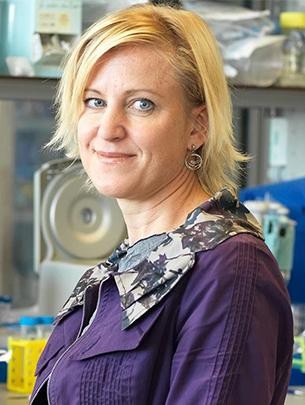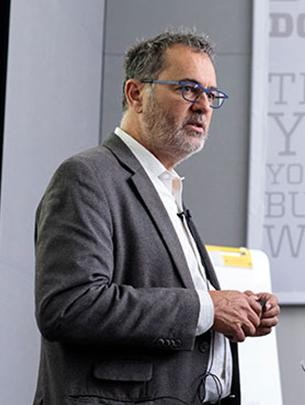As scientists around the world rush to learn more about COVID-19, several labs at the University of Chicago’s Pritzker School of Molecular Engineering are taking an innovative approach to vaccine development.

While some companies are already beginning to test vaccine formulations in small trials, there are a lot of potential hurdles to the finish line. It’s important to be exploring approaches from multiple angles, scientists say.
“The reality of vaccine work is that a lot of them won’t turn out, so it’s better to have a deep bench,” said Aaron Esser-Kahn, an associate professor of molecular engineering whose lab has rapidly shifted to address the coronavirus pandemic.
His lab is one of several at PME that is taking a slightly different tack in exploring vaccine development than most commercial labs. Melody Swartz, the William B. Ogden Professor of Molecular Engineering, and Jeff Hubbell, the Eugene Bell Professor in Tissue Engineering, are two others.
‘Turbocharging’ vaccine performance
Esser-Kahn researches the immune system and vaccines, but he previously worked on other diseases including influenza. Because the flu virus mutates so fast, one of their approaches has been to find molecules that boost any vaccine they are added to. COVID-19 doesn’t mutate as fast as the flu, but the same approach is useful, as scientists are exploring many different vaccine avenues for a vaccine in parallel—and these could be added to any promising candidate.
“The idea is that you can add these molecules to many vaccines, and it will improve the response you get,” said Esser-Kahn.
There are two parts to virtually all vaccines. One part is some version of the virus in question, usually with some essential parts lopped off to make it tamer, so that the immune system can learn to recognize it. Then there’s an ‘adjuvant,’ which is the wake-up call for the immune system.

One of Esser-Kahn’s approaches is to adjust the adjuvant to activate immune cell called CD4+ cells. These cells are protect the lungs in flu, SARS and Zika infections; and since COVID-19 tends to attack the lungs, it’s possible that marshalling a strong CD4+ response could offer better protection. “We tried this recently with smallpox, and saw good response,” Esser-Kahn said.
“Another angle is to add a third component to the vaccine, made up of molecules that control how the body responds to the vaccine. These would tweak cells’ signaling processes to help the body better respond to COVID-19 with less chance of side effects.”
Finally, Esser-Kahn is also interested in an approach called “trained immunity.” “This one’s in a very early stage, but we think it has a lot of potential,” he said.
It’s been observed that getting vaccines sometimes reduces a person’s overalllikelihood of getting sick—even with diseases that the vaccine wasn’t treating directly. For example, people who get vaccinated for tuberculosis are less likely to get the flu that winter.
